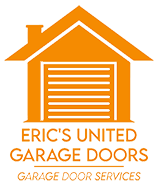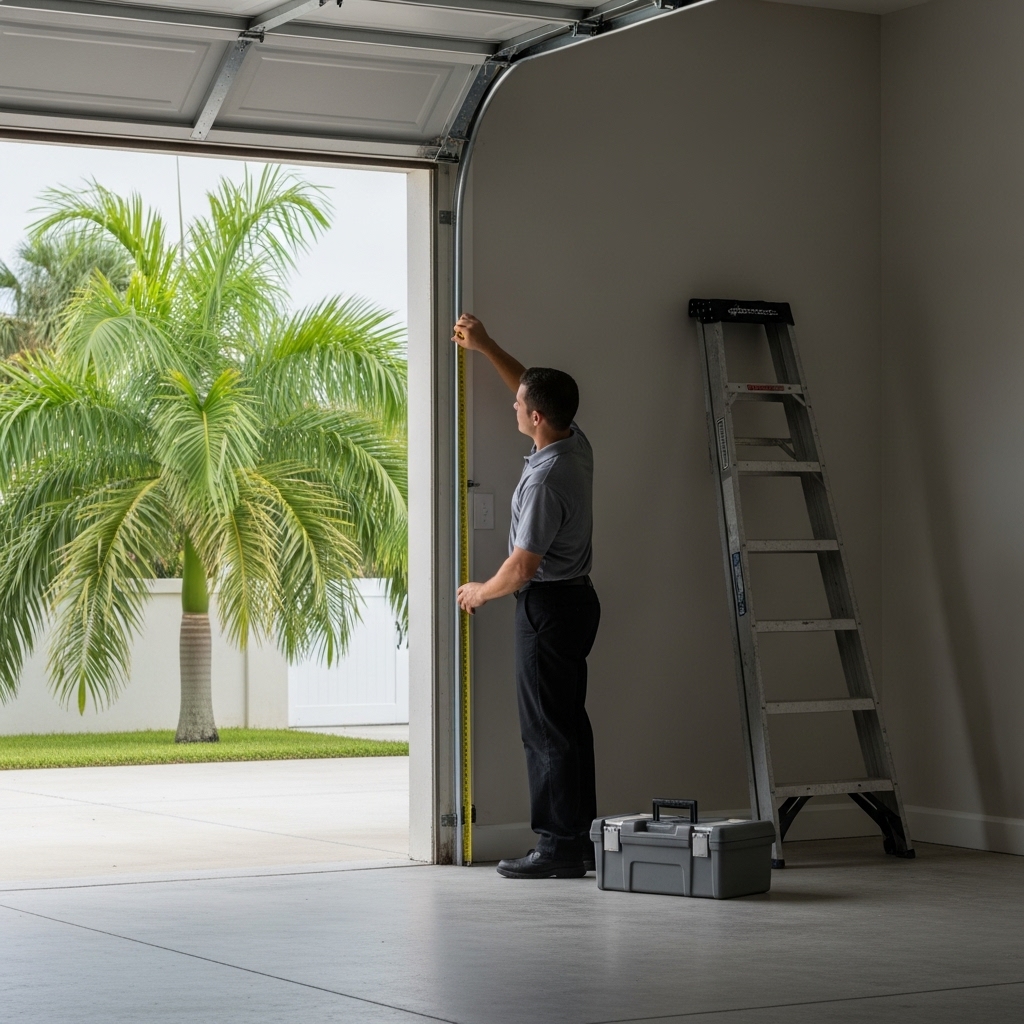A new garage door can transform your home’s curb appeal, improve day-to-day convenience, and enhance security. In Fort Lauderdale, coastal weather and hurricane standards add important steps to the process, which is why a structured plan makes all the difference. This guide walks you through selection, permitting, installation, and maintenance so your project is smooth from start to finish. If you are early in your planning, connecting with an experienced local provider for garage door installation helps you anticipate requirements and ensure your system is built for our coastal environment.
Step 1: Evaluate Your Goals and Space
Begin with how you use your garage. Is it primarily for vehicle storage, a hobby area, or an entry point into your home? This influences your choices for insulation, window lites, and opener features. Measure the opening width and height, and note headroom and backroom clearance so the installer can recommend the right track and spring configuration.
Consider the style of your home—modern coastal, Mediterranean, ranch, or contemporary—and shortlist panel designs that complement it. Finish durability is crucial near the ocean, so ask about factory-applied coatings and corrosion-resistant hardware.
Step 2: Understand Local Code and Wind Load
Fort Lauderdale projects must meet Florida Building Code requirements, and many addresses fall within high-velocity hurricane zones. Doors often need reinforcement, upgraded track, and specific fastening patterns. Selecting the correct wind package from the start prevents mid-project changes and helps pass inspection without delays.
Discuss documentation with your installer. They should supply product approvals and drawings and coordinate inspections. Having these details in order is one of the most important steps toward a predictable, low-stress installation.
Step 3: Choose Materials and Insulation
While there are many materials on the market, steel and aluminum are common in coastal regions. Steel with a high-quality protective coating offers strength and value, while aluminum is lightweight and corrosion-resistant. Composite options can provide the look of wood with less upkeep.
- Insulated doors: Great for attached garages, they improve comfort and can reduce noise transfer into living areas.
- Non-insulated doors: Suitable for detached garages or spaces not used frequently.
- Window options: If you prefer natural light, choose impact-rated lites or consider solid panels for maximum storm protection.
Step 4: Select Hardware and Opener
Hardware choices affect durability and smoothness. Rollers, hinges, and tracks should be specified for your door’s size and wind rating. Torsion springs are common for balanced lifting, and your installer will select the proper cycle range based on your usage expectations.
For openers, consider quiet operation, appropriate lifting power, and smart features that allow control from your phone. In areas prone to outages, a battery backup is helpful. The opener rail should be reinforced properly, and the attachment point on the door must be secured to a reinforcement plate to distribute load.
Step 5: Plan the Project Timeline
Once materials are selected and permits are in progress, set a schedule that accounts for lead times, HOA approvals, and weather. Clear access in the garage and driveway helps the crew work efficiently. If you have special integration needs—like smart home platforms—share them with the installer ahead of time.
Step 6: Removal and Preparation
On installation day, the crew will secure the area, disconnect the opener, and remove the old door, tracks, and springs. Proper disposal keeps your property tidy. The opening is then inspected for sound attachment points. In hurricane-prone zones, fasteners and brackets are often upgraded for strength and compliance.
Step 7: Install Tracks, Springs, and Panels
Tracks are set plumb and level, anchored according to specifications, and checked for smooth, unobstructed movement. Torsion springs are mounted and wound by trained technicians who follow strict safety procedures. Panels are stacked and aligned, hinges and rollers are installed, and the door is inspected for balance before the opener is reattached or installed.
Weatherstripping is added to help seal the perimeter, and the bottom seal is checked to keep out water and debris. These small details improve performance and comfort immediately.
Step 8: Opener Setup and Safety Checks
The opener is matched to the door’s weight and balance, force settings are adjusted, and safety sensors are aligned. The technician will test the door’s reversal response, confirm manual release operation, and demonstrate how to maintain proper performance over time.
Step 9: Final Inspection and Walkthrough
When inspection is required, the installer coordinates with the authority having jurisdiction. After approval, you should receive an overview of care and maintenance. Make sure you understand how to test the door periodically and when to schedule professional service.
Mid-Project Tips for Smooth Progress
Projects go best when communication is proactive. Confirm selections in writing, keep an eye on timelines, and ask for updates as permits move along. If you want extra assurance, choose a team accustomed to Fort Lauderdale neighborhoods and their specific needs. This familiarity is particularly helpful when you want the aesthetics and hurricane readiness done right the first time. During this phase, homeowners often finalize accessories and confirm any smart integrations while also verifying the plan for garage door installation and inspection scheduling.
Care and Maintenance After Installation
Maintaining your door protects your investment. A few minutes of attention every month can ward off issues and keep operation quiet and smooth.
- Visually inspect cables, hinges, and rollers for wear or corrosion.
- Keep tracks clean and free of debris; do not lubricate the track itself.
- Lubricate metal moving parts per the manufacturer’s recommendations.
- Test the safety reversal by placing a safe test object beneath the door and confirming proper response.
- Check weatherstripping for gaps and replace when brittle.
Style Considerations for Fort Lauderdale Homes
From contemporary oceanfront properties to classic neighborhoods, style options are plentiful. Modern flush panels with horizontal grooves complement sleek facades, while traditional raised panels fit a broad range of architecture. Coastal palettes—white, sand, light gray—look fresh and resist heat absorption. If you choose windows, place them to balance privacy with natural light.
Common Mistakes to Avoid
- Skipping wind load verification. It’s essential for compliance and safety.
- Undersizing the opener. Ensure lifting power matches the door’s weight and balance.
- Overlooking reinforcement at the opener attachment point.
- Ignoring regular maintenance. Small tune-ups extend component life.
FAQ
Q: Do I need a permit for a new residential door in Fort Lauderdale?
A: In many cases, yes. Your installer should coordinate permits and provide necessary product approvals for inspection.
Q: Which material is best for coastal conditions?
A: Galvanized steel with a high-quality finish is a popular, durable choice. Aluminum and composite options can also perform well in humid, salty air.
Q: Can I install the door myself?
A: DIY may be tempting, but springs, wind load details, and inspection requirements make professional installation the safer, more reliable choice.
Q: What about insulation?
A: If your garage is attached or used frequently, insulated doors help with comfort and noise. Detached or seldom-used spaces may not need it.
Q: How long will installation take?
A: Many homes are completed in a day once materials and permits are in place. Complex sites or weather can extend the schedule.
Q: How do I keep the door quiet over time?
A: Proper lubrication, roller upgrades, and periodic adjustments help maintain smooth, quiet operation.
Q: Can I add smart controls later?
A: Yes. Many modern openers accept add-on smart modules and can be integrated after installation.
Q: What should I do before installation day?
A: Clear the garage entry area, move vehicles and stored items, and discuss any special access needs or integration goals with your installer.
Bring Your Plan to Life
When you follow a clear process—selecting the right materials, confirming wind load, and partnering with a knowledgeable local installer—you set yourself up for a beautiful, long-lasting result. If now is the time to move from research to action, schedule professional garage door installation with a Fort Lauderdale team that will coordinate permits, deliver a clean install, and support you with maintenance guidance.

